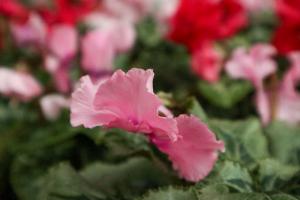Why Do Pot Plants Have Holes in the Leaves?
Pot plants, much like any plant, have leaves to carry out photosynthesis. However, some pot plants, such as Swiss cheese plants, have holes in their leaves. These holes are called fenestrations and can have a variety of purposes. Here are a few theories as to why these holes might exist:
Theories on Pot Plant Fenestrations
Theory One: Natural Selection. One theory is that the fenestrations are a result of natural selection. Plants with fenestrations evolved this trait as a way of adapting to the forest floor, where they would have grown. The holes allow for more light to reach the plant's lower leaves and give rainwater a way to reach the soil beneath the canopy.
Theory Two: Adaptation to a Different Environment. Alternatively, fenestrations could be an adaptation to an environment with low sunlight. Some plants, such as the Swiss cheese plant, are native to Central and South America where they grow under the canopy of other trees. The holes in their leaves could be an adaptation to access as much light as possible.
Theory Three: Defense Mechanism. A third theory is that the fenestrations are a defense mechanism. They could have developed as a way of confusing herbivores. The holes might help to make certain leaves appear less appetizing to insects and animals, as they resemble those that have already been damaged or eaten.
Swiss Cheese Plants and Their Fenestrations
The Swiss Cheese Plant. One of the most famous types of pot plants with holes in their leaves is the Swiss cheese plant, also known as Monstera deliciosa. This plant's leaves feature large and iconic fenestrations that give it a unique appearance.
Swiss Cheese Plant Care. Caring for a Swiss cheese plant involves keeping it in bright, indirect sunlight and watering it regularly. Although they can tolerate some shade, they need plenty of light to thrive. The size of the pot and the composition of the soil are also important. Swiss cheese plants prefer well-draining soil, and a pot that is too small can restrict growth.
The Benefits of Fenestrations in Pot Plants
Improved Photosynthesis and Water Drainage. Plants with fenestrations can have improved photosynthesis, which leads to faster and better growth. The holes allow for more light to reach the lower leaves, which can be especially important if the plant is growing in a dim environment. Additionally, the fenestrations can help to prevent standing water on the leaves, which can prevent photosynthesis and cause rot.
Unique Aesthetic Appeal. Finally, fenestrations can simply have aesthetic appeal. Plants with unique features, such as Swiss cheese plants with their iconic holes, can be visually striking and make for interesting decor. They can add a touch of natural beauty to any room.
Conclusion
Ultimately, there are a few theories as to why pot plants may have holes in their leaves. Some of the leading theories include natural selection, adaptation to low light environments, and defense mechanisms. The Swiss cheese plant is one of the most famous examples of a pot plant with fenestrations, which add to its unique aesthetic appeal. Regardless of why they exist, however, fenestrations in pot plants can offer benefits such as improved photosynthesis and water drainage, making them a desirable addition to any indoor garden.

 how many times do yo...
how many times do yo... how many planted tre...
how many planted tre... how many pine trees ...
how many pine trees ... how many pecan trees...
how many pecan trees... how many plants comp...
how many plants comp... how many plants can ...
how many plants can ... how many plants and ...
how many plants and ... how many pepper plan...
how many pepper plan...































